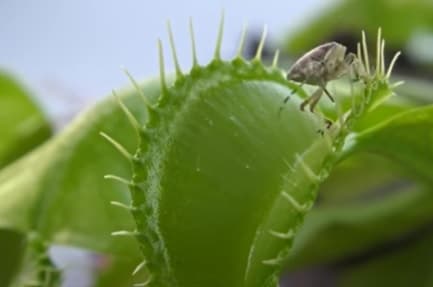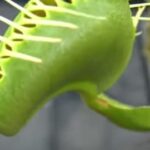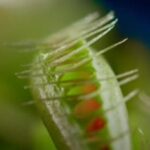As an Amazon Associate, this site earns commissions from qualifying purchases. For more details, click here.
Venus flytraps are without question the most popular carnivorous plant. That’s no surprise given its appearance and the way it eats bugs, creepy yet fascinating. But some people shy away from this plant because it’s hard to take care of. Or is it?
Venus flytraps have a reputation for being hard to take care of. The plant is easy to grow but most people are not aware of its needs. This is why Venus flytraps often live just a few months when they can last for years.
If you have never taken care of a carnivorous plant before, raising a Venus flytrap might seem daunting. It can be challenging because their requirements differ from non-carnivorous plants. And compared to sundews, pitcher plants and other meat-eating plants, Venus flytraps do need more specific care.
That doesn’t mean you can’t grow Venus flytraps at home. You can, but you have to follow its specific needs and avoid common mistakes.
Most Common Mistakes When Growing Venus Flytraps
Let me say it again, Venus flytraps are not hard to grow. But these plants are not as forgiving if you mistakes. A few mistakes can weaken or kill a Venus flytrap which is why they have a reputation for being difficult to grow.
So let’s take a look at those common mistakes and how to avoid them.
Wrong Soil is Used
Growing Venus flytraps in fertilized potting soil is a big no-no. Avoid this at all cost.
The best soil for Venus flytraps are 2/3 peat or sphagnum moss with a third sand or perlite. I use Perfect Plants because it has proven time and again to be food for these plants.
Venus flytraps will not grow on rich, fertilized soil. That soil is a must for non-carnivorous plants, but for Venus flytraps it can be fatal. It might survive for a few weeks but within a few months the plant will wither.
Venus flytraps grow naturally in poor, acidic soil. Because the ground lacks nutrients, these plants developed traps to catch and eat bugs, the closest source of nutrition available.
The nutrients in fertilized soil will not help Venus flytraps. These plants are used to obtaining nutrients from the bugs they eat. As the bugs are consumed, their nutrients flow from the traps into the plant.

Too Much or Too Little Water
There are two mistakes people often make here: using too much/too little water and two, using tap water.
I never use tap water on my Venus flytraps or any of my plants because it might contain minerals and other harmful elements. Rainwater or distilled water are ideal for Venus flytraps.
The second mistake is providing too much or too little water. Use enough water to keep the soil moist without getting it too wet.
Here’s a simple trick to find out if you are using the right amount of water.
Dip your finger in the soil and pull it out. If water comes up from the soil, there is too much. If the soil doesn’t stick to your finger, the soil is too dry.
If the soil sticks to your finger but water doesn’t come up to the surface, you are using the right amount of water.
Related. Venus Flytrap Care – What You Need to Know
The Tray Method
The tray method is the simplest way to ensure Venus flytraps get the right amount of water.
For this to work, make sure there is good drainage. The pot should be at least 4 inches deep and 5 inches wide.
Put the potted Venus flytrap in a tray. Pour 1-2 inches of water in the tray. What will happen is the plant’s roots will absorb the water. Replenish the water as necessary.
How often you replenish depends on the climate, temperature, humidity and other factors. If the plant soaks up the water quickly, you can increase the volume to 3-4 inches.
Not Enough Sunlight
Venus flytraps must have at least 6 hours of direct sunlight. With 6 hours (or more) of sunlight, the plant will reach its maximum growth potential. Vibrant colors, healthy leaves, powerful traps and a long life.
Venus flytraps can survive with just 4 hours of direct sunlight. But it won’t be as robust as a plant gets at least 6 hours of sunlight.
If your Venus flytrap is pale, has thin leaves and not eating, it’s likely due to lack of sunlight. This can also be the reason why your Venus flytraps are not making traps.
For the best results, Venus flytraps should be outdoors where it can get direct sunlight. The plant also has access to insects so you don’t have to do any manual feeding.
You can also place Venus flytraps on a window bay provided the sun shines directly on it.
What about Artificial Grow Lights?
Venus flytraps will do fine with artificial lighting. A good choice is Fecida grow lights as it provides good lighting without being harsh.
If I had to choose I’d pick sunlight over indoor grow lights. But if your area does not get a lot of sun, artificial lighting is a good alternative.
If you are going to use indoor grow lights, keep it on for 6-8 hours. I keep the light 7-8 inches from the plant. Keep an eye on your Venus flytrap and how they react to it.
Temperature / Humidity Not Ideal
Most Venus flytraps thrive in 70- 95 F (21- 35 C) and a minimum of 40 F (5 C). If it drops to 20 F (-6 C) the plant will enter dormancy.
Unlike other plants, Venus flytraps do not need high humidity. Anything above 50% is fine.
Ideally, Venus flytraps should be in a 70-95 F temperature range. If you can keep the temperature in the mid 80s that is fine too.
Of course temperature fluctuates, and the good news is Venus flytraps can handle it. If the plant is healthy, it should do fine even if the temperature climbs higher than 95 F for a little while.
But if you leave Venus flytraps in 100 F temperature for days or weeks, the plant is going to wilt and die. If you leave the plant below freezing temperature it will not survive.
Keep an eye on the weather if it regularly goes over 95 F or drops 40 F. Prolonged exposure to very hot / very cold climates is not good for Venus flytraps.
Feeding Too Much / Wrong Food
Venus flytraps do not need a lot of food. Giving it too much – or the wrong food – can kill the trap and weaken the plant.
Do not feed Venus flytraps every day. Once a week or every two weeks is enough.
Venus flytraps feed on small flying and crawling insects. Do not give it processed meat, sweets, dairy products, fruits, vegetables or spices. And no, Venus flytraps cannot eat people.
Give it a small amount of food, one third the size of the trap. You don’t have to feed outdoor Venus flytraps as they catch bugs when hungry.
Do not feed all the traps. Only one trap or two has to eat. It takes days (or weeks) for a Venus flytrap to digest a meal and it uses a lot of energy to do so.
The plant is willing to use a lot of energy because it is going to get nutrients in return.
But if you feed it too often, the plant is going to run out of energy. It’s going to expend more resources and won’t have enough left to digest the food.
You also have to make sure the plant eats the right kind of foods. Venus flytraps eat flies, spiders, crickets, grasshoppers etc.
Any flying insect small enough to fall in a Venus flytrap will be eaten. You can also feed it dead bloodworms.
Venus flytrap traps have to be stimulated to close. Use tweezers to prod the trap to close over a dead bug. This isn’t necessary with living prey as their movement triggers the closing mechanism.
Is My Venus Flytrap Dead or Dormant?
Venus flytraps enter dormancy in mid or late fall. Signs of incoming dormancy are:
- Its traps get smaller and eventually the plant stops producing any
- Leaves turn black and fall off
- The plant appears to stop growing
If you’re new to this, you can be forgiven for thinking the plant has died. A lot of dormant Venus flytraps have been mistaken as dead and discarded.
If your Venus flytrap shows these characteristics in the fall, it’s likely due to dormancy. So if your Venus flytrap turns black do not panic.
Venus flytraps need dormancy for 3-5 months. During this period, keep the plant in damp soil and as much light as possible. This is where indoor lights will come in handy.
As to whether to keep Venus flytraps outside during dormancy or not:
If you are in zone 8 or higher, yes you can keep Venus flytraps outdoors all year long. The only exception is when there is a long freeze.
If you are between zones 4 to 7, mulch your Venus flytrap or put it in a bog garden.
Now if you live in a place with prolonged winter freezes (or don’t have a garden), let it go dormant indoors. Place it where the temperature is 32-55 F (0-12 C). A non-heated shed or garage is a good option.

My fascination with carnivorous plants began many, many years ago with Venus Fly Traps. Now I am more than happy to impart what I know with other enthusiasts and those who are curious about meat eating plants.


